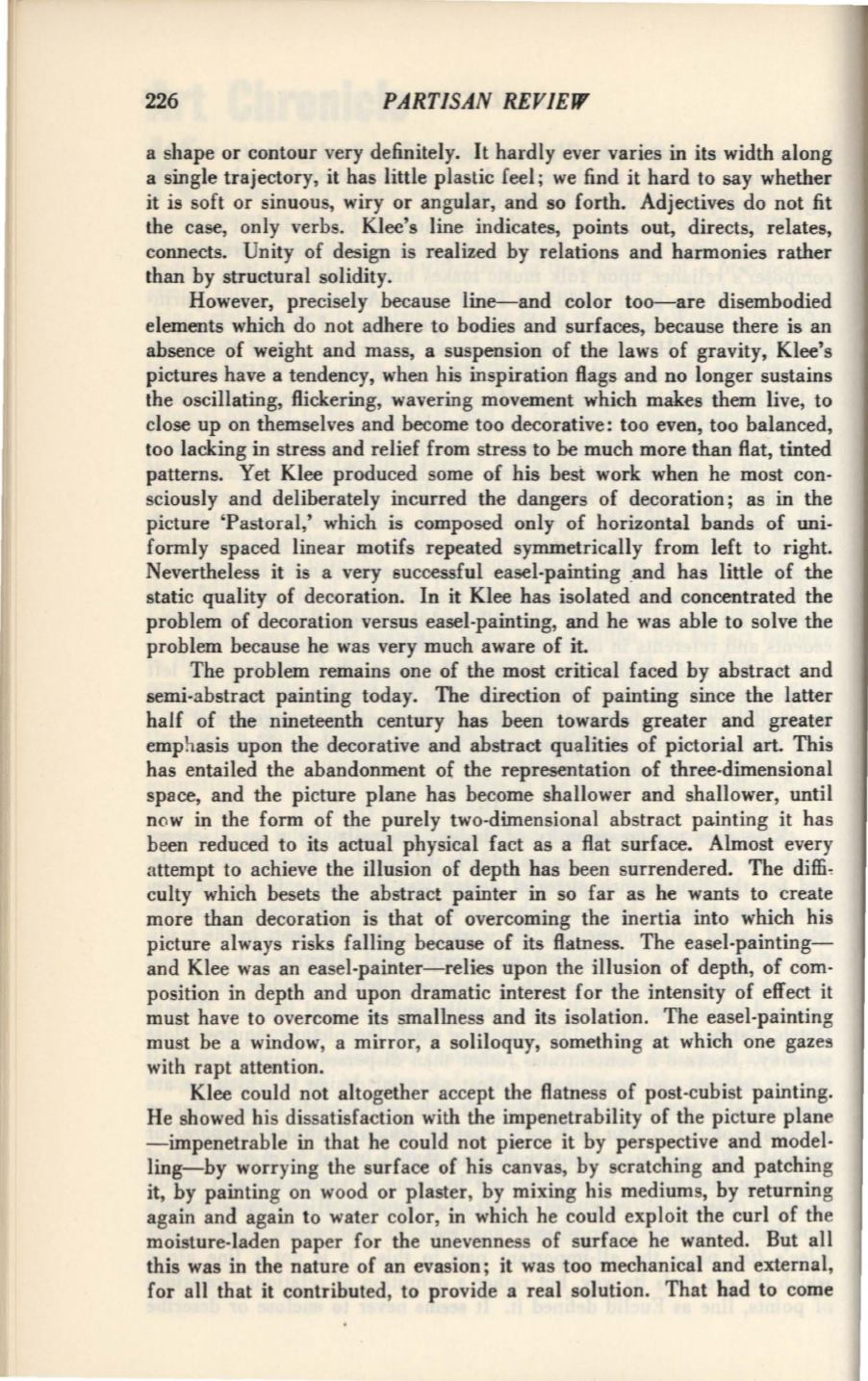
226
PARTISAN REVIEW
a shape or contour very definitely.
It
hardly ever varies in its width along
a single trajectory, it has little plastic feel; we find it hard to say whether
it is soft or sinuous, wiry or angular, and so forth. Adjectives do not fit
the case, only verbs. Klee's line indicates, points out, directs, relates,
connects. Unity of design is realized by relations and harmonies rather
than by structural solidity.
However, precisely because line-and color too-are disembodied
elements which do not adhere to bodies and surfaces, because there is an
absence of weight and mass, a suspension of the laws of gravity, Klee's
pictures have a tendency, when his inspiration flags and no longer sustains
the oscillating, flickering, wavering movement which makes them live, to
close up on themselves and become too decorative: too even, too balanced,
too lacking in stress and relief from stress to be much more than flat, tinted
patterns. Yet Klee produced some of his best work when he most con·
sciously and deliberately incurred the dangers of decoration; as in the
picture 'Pastoral,' which is composed only of horizontal bands of uni–
formly spaced linear motifs repeated symmetrically from left to right.
Nevertheless it is a very successful easel-painting _and has little of the
static quality of decoration. In it Klee has isolated and concentrated the
problem of decoration versus easel-painting, and he was able to solve the
problem because he was very much aware of it.
The problem remains one of the most critical faced by abstract and
semi-abstract painting today. The direction of painting since the latter
half of the nineteenth century has been towards greater and greater
emphasis upon the decorative and abstract qualities of pictorial art. This
has entailed the abandonment of the representation of three-dimensional
space, and the picture plane has become shallower and shallower, until
now in the form of the purely two-dimensional abstract painting it has
been reduced to its actual physical fact as a flat surface. Almost every
attempt to achieve the illusion of depth has been surrendered. The diffi,
culty which besets the abstract painter in so far as he wants to create
more than decoration is that of overcoming the inertia into which his
picture always risks falling because of its flatness. The easel-painting–
and Klee was an easel-painter-relies upon the illusion of depth, of com·
position in depth and upon dramatic interest for the intensity of effect it
must have to overcome its smallness and its isolation. The easel-painting
must be a window, a mirror, a soliloquy, something at which one gazes
with rapt attention.
Klee could not altogether accept the flatness of post-cubist painting.
He showed his dissatisfaction with the impenetrability of the picture plane
-impenetrable in that he could not pierce it by perspective and model–
ling-by worrying the surface of his canvas, by scratching and patching
it, by painting on wood or plaster, by mixing his mediums, by returning
again and again to water color, in which he could exploit the curl of the
moisture-laden paper for the unevenness of surface he wanted. But all
this was in the nature of an evasion; it was too mechanical and external,
for all that it contributed, to provide a real solution. That had to come


